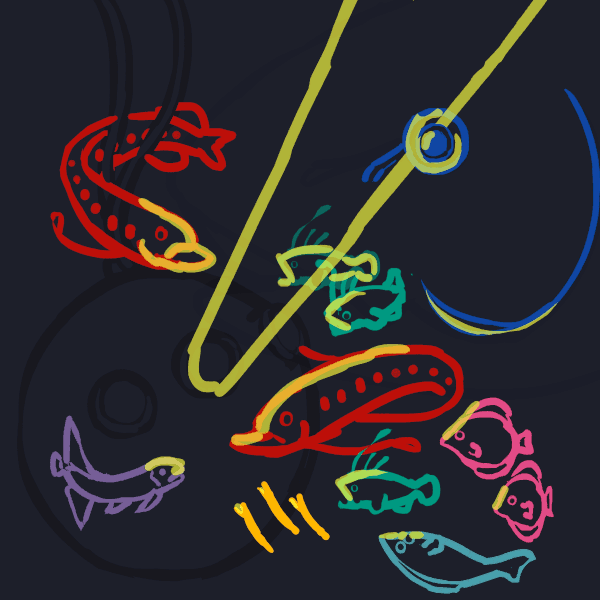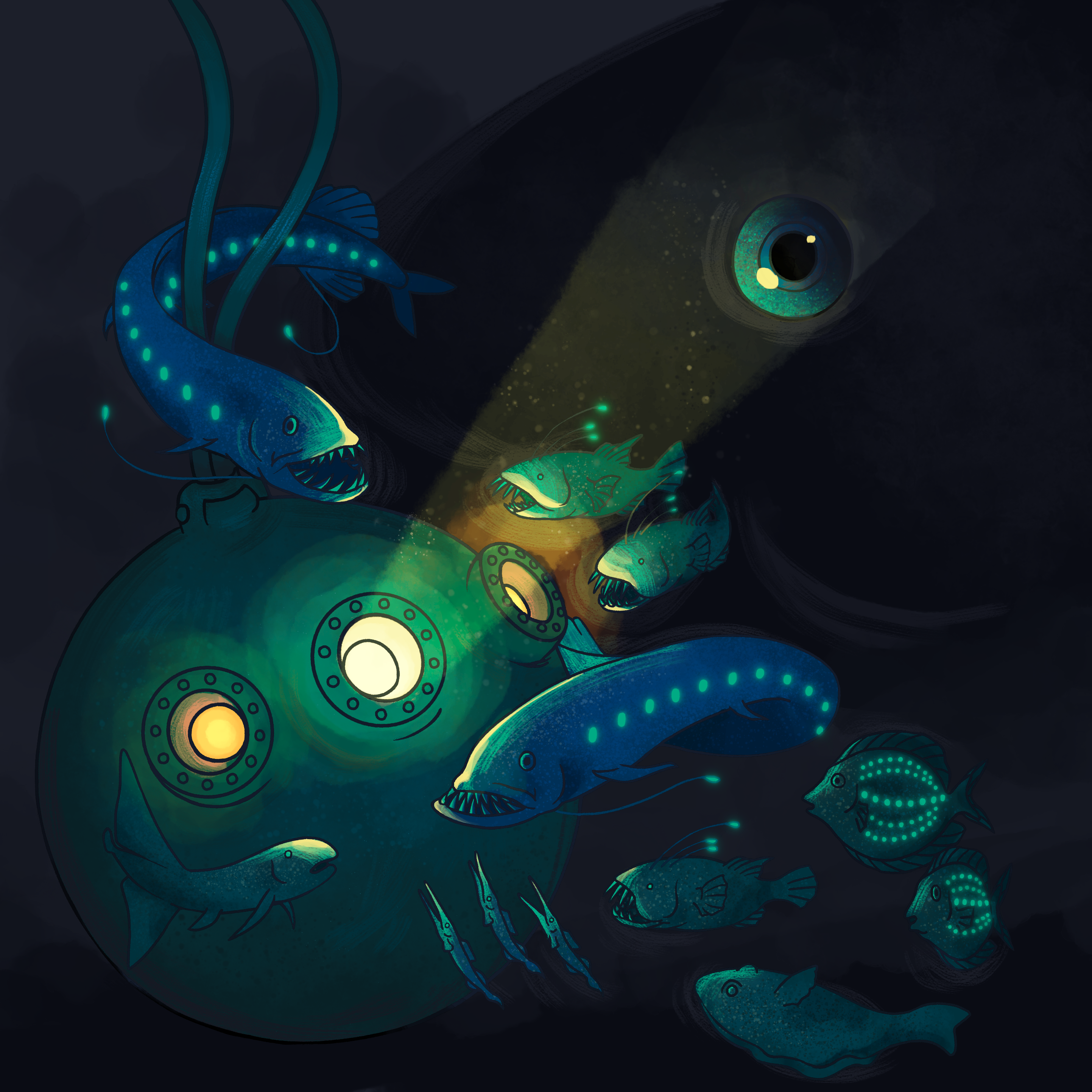
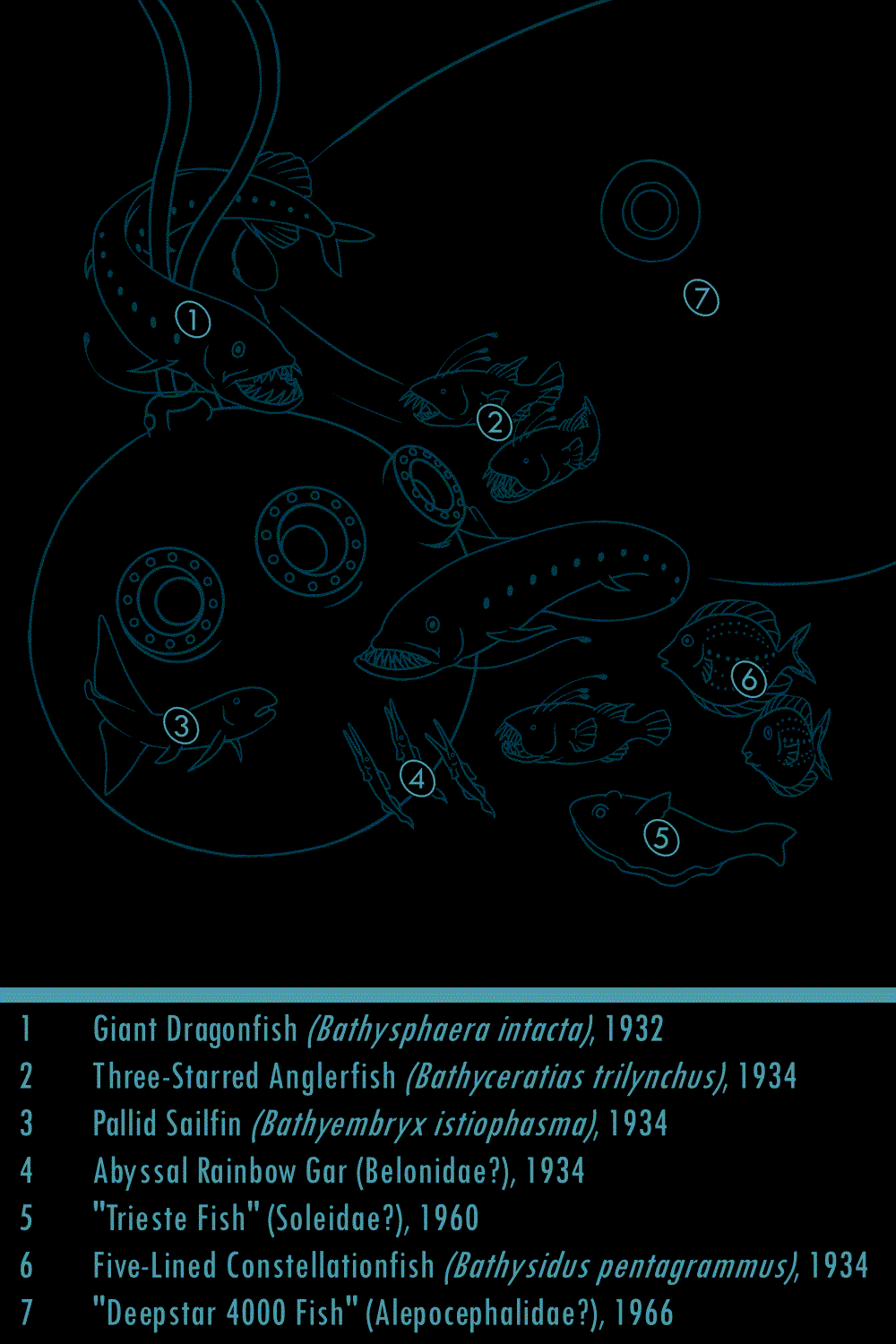
The submersible in this image is based on the Bathysphere, which was constructed in 1929 and operational from 1930 to 1934. There is a very interesting story behind the Bathysphere, its successor the Benthoscope, and the two men principally involved in their creation, which I'd really like to tell in full some other time. For now, all that matters is that the Bathysphere was designed and manufactured by Otis Barton for use by the naturalist William Beebe. Over the course of four years, the two of them made record-breaking deep dives off the coast of Bermuda (their research station was based on the "very Abbott and Costello type name" Nonsuch Island) to observe various deep sea fishes. Beebe claimed to have seen five new species between 1932 and 1934, which are numbers 1, 2, 3, 4, and 6 on the poster above. For the sake of the composition, this fictional submersible is not completely accurate to the real Bathysphere. The real vessel had:
- a large rectangular base so it could actually sit flat on the seafloor, whereas I have drawn it tilted at a dramatic angle
- electric and telephone cables that came in at an angle, not from straight above with the hoist
- the searchlight aimed out of the right window, with the center open for observation; the left was initially sealed shut but later refitted with an actual window so they could film through it
The five species Beebe reported to have seen were only ever seen through the Bathysphere's windows. They did not capture any specimens; the species were described exclusively from what Beebe saw in situ, which is what the scientific community might call a "bold move". In the 90 years since the Bathysphere dives, no tangible evidence of the "Beebe Five" (no one calls them that) has been found. Nonsuch island was turned into a military base during World War II, which may well have destroyed the marine ecosystem and rendered the Beebe Five extinct, if they ever did actually exist. (Benthoscope dives happened off the coast of California, not the same area as the Bathysphere.) Some are suspected to be misidentifications of other animals, such as the five-lined constellationfish actually being a ctenophore (comb jelly), which has luminescent lines running down its body similar to what Beebe described.

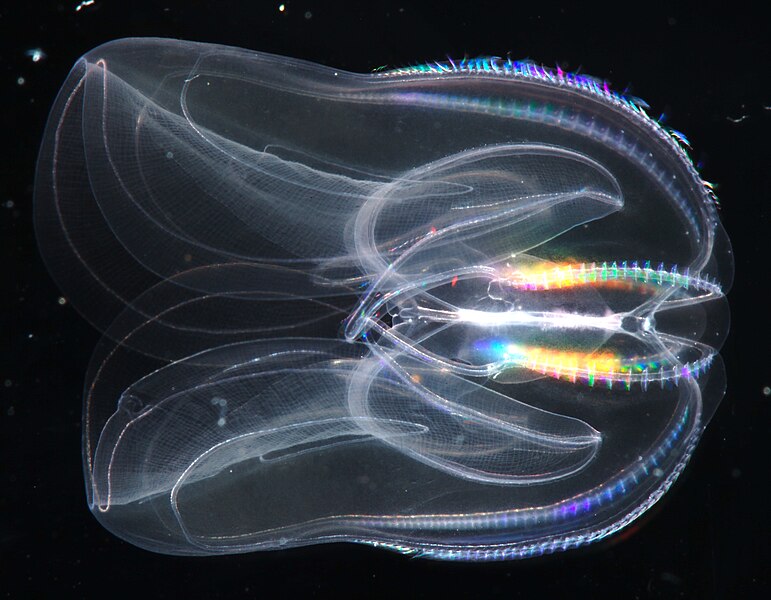
Wikimedia: The Great Mule of Eupatoria, Bruno C. Vellutini
Besides the Beebe Five, this illustration also features fish from two other deep sea expeditions. The Trieste and Deepstar 4000 were Navy vessels built in 1953 and 1965 respectively, and were mobile steerable vessels much more like modern submarines than the Bathysphere. Neither of the cryptids sighted by these vessels were given binomial names, because modern scientists are cowards. The modest "Trieste flatfish" was reported from the bottom of the Challenger Deep, the deepest area of Earth's oceans. The Trieste hit the seafloor at a depth of (approximately, debatedly) 35,800 feet, which is almost ten thousand feet deeper than the deepest-dwelling fish are currently known to venture. Jacques Piccard, witness to the Trieste flatfish, claimed it to be a real-deal ray-finned fish, complete with eyeballs, which are not very fashionable in the hadopelagic zone due to a lack of light to use them on. Skeptics say that it was probably really a sea cucumber, which can have eyestalk-like protrusions, but I personally choose to believe in the humble yet intrepid sole that held on to his eyeballs just in case and was finally rewarded by being blasted with a searchlight from a bathyscaphe.
The "Deepstar 4000 fish", aka "DS4K" (no one calls it that), is a more ominous beast. Sighted a mere ("mere") 4,000 feet underwater off the coast of San Diego, it was claimed to also be a ray-finned fish. DS4K is exceptional for its size, which was apparently much larger than the Deepstar 4000 itself, possibly as long as 40 feet. This would make it nearly four times the size of the largest recognized ray-finned fish, the mola, and comparable in size to the second-largest cartilaginous fish, the basking shark. DS4K might have actually been a very large Pacific sleeper shark or related species, which are found up to 6,600 feet deep and grow to potentially 20 feet long (although 14 feet is the highest bound confirmed by scientific standards.)
Because of the ephemeral and unphotographed nature of these fish, I was free to interpret them flexibly, which is a lot more fun than trying to get every detail of a well-documented species correct. The original eyewitness sketches of some of the Beebe Five are missing body parts, because Beebe and his illustrator Else Bostelmann were unwilling to make conjecture of things he couldn't see through the Bathysphere window. (This apparently did not stop them from making conjecture that the things they saw were fishes and not ctenophores or firefly squid.) It seems like most modern drawings of these fish are copied directly from Bostelmann's illustrations, missing fins and all, which makes them look strange and unrealistic. I have added in the missing parts based on photographs of related species and my own knowledge of where the fins on a fish go. The Trieste flatfish and DS4K were never canonized in illustration in the first place, so I was even less tethered to reality in drawing them. You cannot prove this isn't exactly what the Trieste flatfish looks like.
I also took some artistic license with the size of the abyssal rainbow gar, three-starred anglerfish, and five-lined constellationfish. They were originally described as being four, six, and five inches long respectively, but I have enlarged them to be actually visible and coherent at this line width. Another thing a lot of 21st century Beebe reconstructions do is interpret the abyssal rainbow gar as being similar in size and form to the alligator gar, but in this case "gar" refers to the original garfish, Belone belone, now usually called needlefish to avoid confusion with the American gars.

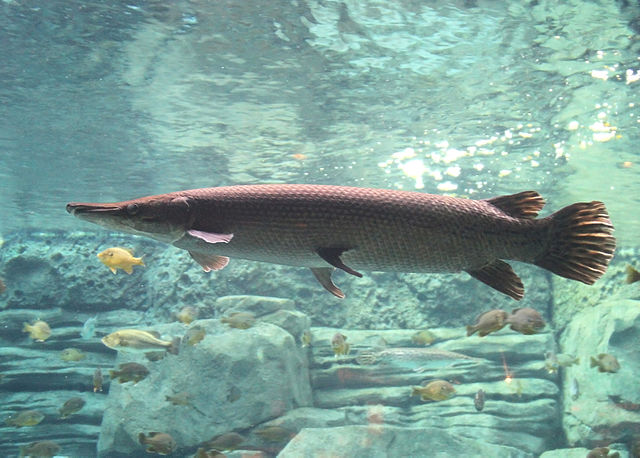
Wikimedia: euparkeria, Greg Hume
They are both cute, so it's okay.
Anyway, here is a progress gif of this drawing. I didn't actually take screenshots as I was working on it, this is just me deconstructing and reconstructing layers. In case you were curious, the final image has 39 visible layers (I kept each fish on its own layer in case I wanted to move them around) and is an even 1.0 GB in size.
